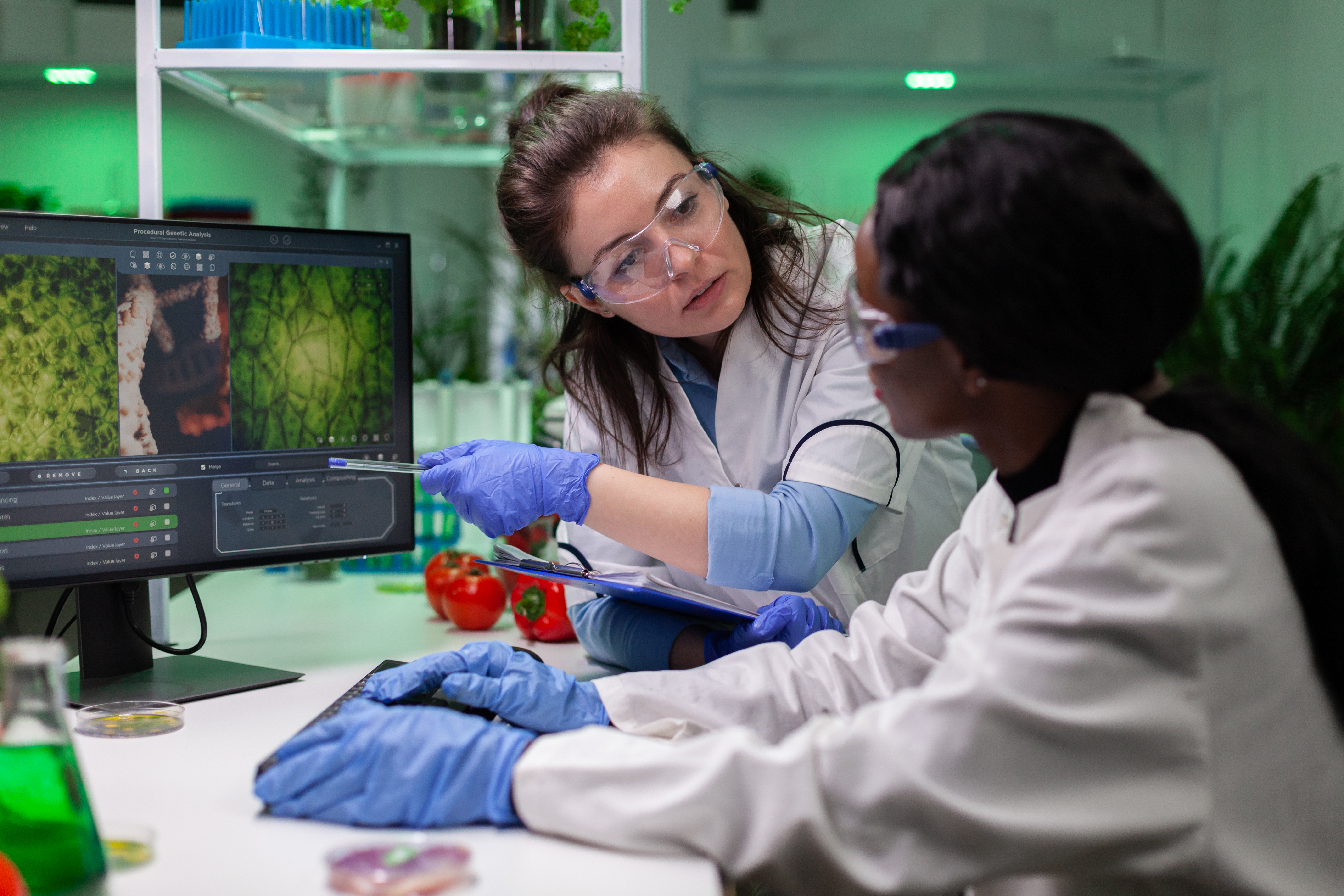Filters
Host (768597)
Bovine (1090)Canine (20)Cat (408)Chicken (1642)Cod (2)Cow (333)Crab (15)Dog (524)Dolphin (2)Duck (13)E Coli (239129)Equine (7)Feline (1864)Ferret (306)Fish (125)Frog (55)Goat (36847)Guinea Pig (752)Hamster (1376)Horse (903)Insect (2053)Mammalian (512)Mice (6)Monkey (601)Mouse (96266)Pig (197)Porcine (70)Rabbit (358709)Rat (11723)Ray (55)Salamander (4)Salmon (15)Shark (3)Sheep (4247)Snake (4)Swine (301)Turkey (57)Whale (3)Yeast (5336)Zebrafish (3022)Isotype (156643)
IgA (13624)IgA1 (941)IgA2 (318)IgD (1949)IgE (5594)IgG (87187)IgG1 (16733)IgG2 (1329)IgG3 (2719)IgG4 (1689)IgM (22029)IgY (2531)Label (239340)
AF488 (2465)AF594 (662)AF647 (2324)ALEXA (11546)ALEXA FLUOR 350 (255)ALEXA FLUOR 405 (260)ALEXA FLUOR 488 (672)ALEXA FLUOR 532 (260)ALEXA FLUOR 555 (274)ALEXA FLUOR 568 (253)ALEXA FLUOR 594 (299)ALEXA FLUOR 633 (262)ALEXA FLUOR 647 (607)ALEXA FLUOR 660 (252)ALEXA FLUOR 680 (422)ALEXA FLUOR 700 (2)ALEXA FLUOR 750 (414)ALEXA FLUOR 790 (215)Alkaline Phosphatase (825)Allophycocyanin (32)ALP (387)AMCA (80)AP (1160)APC (15217)APC C750 (13)Apc Cy7 (1248)ATTO 390 (3)ATTO 488 (6)ATTO 550 (1)ATTO 594 (5)ATTO 647N (4)AVI (53)Beads (225)Beta Gal (2)BgG (1)BIMA (6)Biotin (27817)Biotinylated (1810)Blue (708)BSA (878)BTG (46)C Terminal (688)CF Blue (19)Colloidal (22)Conjugated (29246)Cy (163)Cy3 (390)Cy5 (2041)Cy5 5 (2469)Cy5 PE (1)Cy7 (3638)Dual (170)DY549 (3)DY649 (3)Dye (1)DyLight (1430)DyLight 405 (7)DyLight 488 (216)DyLight 549 (17)DyLight 594 (84)DyLight 649 (3)DyLight 650 (35)DyLight 680 (17)DyLight 800 (21)Fam (5)Fc Tag (8)FITC (30165)Flag (208)Fluorescent (146)GFP (563)GFP Tag (164)Glucose Oxidase (59)Gold (511)Green (580)GST (711)GST Tag (315)HA Tag (430)His (619)His Tag (492)Horseradish (550)HRP (12960)HSA (249)iFluor (16571)Isoform b (31)KLH (88)Luciferase (105)Magnetic (254)MBP (338)MBP Tag (87)Myc Tag (398)OC 515 (1)Orange (78)OVA (104)Pacific Blue (213)Particle (64)PE (33571)PerCP (8438)Peroxidase (1380)POD (11)Poly Hrp (92)Poly Hrp40 (13)Poly Hrp80 (3)Puro (32)Red (2440)RFP Tag (63)Rhodamine (607)RPE (910)S Tag (194)SCF (184)SPRD (351)Streptavidin (55)SureLight (77)T7 Tag (97)Tag (4710)Texas (1249)Texas Red (1231)Triple (10)TRITC (1401)TRX tag (87)Unconjugated (2110)Unlabeled (218)Yellow (84)Pathogen (489613)
Adenovirus (8665)AIV (315)Bordetella (25035)Borrelia (18281)Candida (17817)Chikungunya (638)Chlamydia (17650)CMV (121394)Coronavirus (5948)Coxsackie (854)Dengue (2868)EBV (1510)Echovirus (215)Enterovirus (677)Hantavirus (254)HAV (905)HBV (2095)HHV (873)HIV (7865)hMPV (300)HSV (2356)HTLV (634)Influenza (22132)Isolate (1208)KSHV (396)Lentivirus (3755)Lineage (3025)Lysate (127759)Marek (93)Measles (1163)Parainfluenza (1681)Poliovirus (3030)Poxvirus (74)Rabies (1519)Reovirus (527)Retrovirus (1069)Rhinovirus (507)Rotavirus (5346)RSV (1781)Rubella (1070)SIV (277)Strain (67790)Vaccinia (7233)VZV (666)WNV (363)Species (2982223)
Alligator (10)Bovine (159546)Canine (120648)Cat (13082)Chicken (113771)Cod (1)Cow (2030)Dog (12745)Dolphin (21)Duck (9567)Equine (2004)Feline (996)Ferret (259)Fish (12797)Frog (1)Goat (90451)Guinea Pig (87888)Hamster (36959)Horse (41226)Human (955186)Insect (653)Lemur (119)Lizard (24)Monkey (110914)Mouse (470743)Pig (26204)Porcine (131703)Rabbit (127597)Rat (347841)Ray (442)Salmon (348)Seal (8)Shark (29)Sheep (104984)Snake (12)Swine (511)Toad (4)Turkey (244)Turtle (75)Whale (45)Zebrafish (535)Technique (5597646)
Activation (170393)Activity (10733)Affinity (44631)Agarose (2604)Aggregation (199)Antigen (135358)Apoptosis (27447)Array (2022)Blocking (71767)Blood (8528)Blot (10966)ChiP (815)Chromatin (6286)Colorimetric (9913)Control (80065)Culture (3218)Cytometry (5481)Depletion (54)DNA (172449)Dot (233)EIA (1039)Electron (6275)Electrophoresis (254)Elispot (1294)Enzymes (52671)Exosome (4280)Extract (1090)Fab (2230)FACS (43)FC (80929)Flow (6666)Fluorometric (1407)Formalin (97)Frozen (2671)Functional (708)Gel (2484)HTS (136)IF (12906)IHC (16566)Immunoassay (1589)Immunofluorescence (4119)Immunohistochemistry (72)Immunoprecipitation (68)intracellular (5602)IP (2840)iPSC (259)Isotype (8791)Lateral (1585)Lenti (319416)Light (37250)Microarray (47)MicroRNA (4834)Microscopy (52)miRNA (88044)Monoclonal (516109)Multi (3844)Multiplex (302)Negative (4261)PAGE (2520)Panel (1520)Paraffin (2587)PBS (20270)PCR (9)Peptide (276160)PerCP (13759)Polyclonal (2762994)Positive (6335)Precipitation (61)Premix (130)Primers (3467)Probe (2627)Profile (229)Pure (7808)Purification (15)Purified (78305)Real Time (3042)Resin (2955)Reverse (2435)RIA (460)RNAi (17)Rox (1022)RT PCR (6608)Sample (2667)SDS (1527)Section (2895)Separation (86)Sequencing (122)Shift (22)siRNA (319447)Standard (42468)Sterile (10170)Strip (1863)Taq (2)Tip (1176)Tissue (42812)Tube (3306)Vitro (3577)Vivo (981)WB (2515)Western Blot (10683)Tissue (2015946)
Adenocarcinoma (1075)Adipose (3459)Adrenal (657)Adult (4883)Amniotic (65)Animal (2447)Aorta (436)Appendix (89)Array (2022)Ascites (4377)Bile Duct (20)Bladder (1672)Blood (8528)Bone (27330)Brain (31189)Breast (10917)Calvaria (28)Carcinoma (13493)cDNA (58547)Cell (413805)Cellular (9357)Cerebellum (700)Cervix (232)Child (1)Choroid (19)Colon (3911)Connective (3601)Contaminant (3)Control (80065)Cord (661)Corpus (148)Cortex (698)Dendritic (1849)Diseased (265)Donor (1360)Duct (861)Duodenum (643)Embryo (425)Embryonic (4583)Endometrium (463)Endothelium (1424)Epidermis (166)Epithelium (4221)Esophagus (716)Exosome (4280)Eye (2033)Female (475)Frozen (2671)Gallbladder (155)Genital (5)Gland (3436)Granulocyte (8981)Heart (6850)Hela (413)Hippocampus (325)Histiocytic (74)Ileum (201)Insect (4880)Intestine (1944)Isolate (1208)Jejunum (175)Kidney (8075)Langerhans (283)Leukemia (21541)Liver (17340)Lobe (835)Lung (6064)Lymph (1208)Lymphatic (639)lymphocyte (22572)Lymphoma (12782)Lysate (127759)Lysosome (2813)Macrophage (31794)Male (1617)Malignant (1465)Mammary (1985)Mantle (1042)Marrow (2210)Mastocytoma (3)Matched (11710)Medulla (156)Melanoma (15522)Membrane (105772)Metastatic (3574)Mitochondrial (160319)Muscle (37419)Myeloma (748)Myocardium (11)Nerve (6398)Neuronal (17028)Node (1206)Normal (9486)Omentum (10)Ovarian (2509)Ovary (1172)Pair (47185)Pancreas (2843)Panel (1520)Penis (64)Peripheral (1912)Pharynx (122)Pituitary (5411)Placenta (4038)Prostate (9423)Proximal (318)Rectum (316)Region (202210)Retina (956)Salivary (3119)Sarcoma (6946)Section (2895)Serum (24880)Set (167654)Skeletal (13628)Skin (1879)Smooth (7577)Spinal (424)Spleen (2292)Stem (8892)Stomach (925)Stroma (49)Subcutaneous (47)Testis (15393)Thalamus (127)Thoracic (60)Throat (40)Thymus (2986)Thyroid (14121)Tongue (140)Total (10135)Trachea (227)Transformed (175)Tubule (48)Tumor (76921)Umbilical (208)Ureter (73)Urinary (2466)Uterine (303)Uterus (414)Revolutionizing Farming: The Impact of Biotechnology on Agriculture
Learn how biotechnology is changing agriculture by making farming more efficient and sustainable. This blog covers topics like genetically modified crops that resist pests, drought-resistant plants, and new ways to protect the environment while growing food. Discover how biotech is helping farmers grow more food, reduce waste, and tackle challenges like climate change and water shortages. Stay updated on how these innovations are shaping the future of agriculture.
Genprice
Scientific Publications

Revolutionizing Farming: The Impact of Biotechnology on Agriculture
Introduction
Agricultural biotechnology, also known as agritech, is an area of agricultural science involving the use of scientific tools and techniques, including genetic engineering, molecular markers, molecular diagnostics, vaccines, and tissue culture, to modify living organisms: plants, animals, and microorganisms.[1] Crop biotechnology is one aspect of agricultural biotechnology which has been greatly developed upon in recent times. Desired trait are exported from a particular species of Crop to an entirely different species. These transgene crops possess desirable characteristics in terms of flavor, color of flowers, growth rate, size of harvested products and resistance to diseases and pests.
Biotechnology is transforming agriculture in several groundbreaking ways, helping to increase crop yields, improve food quality, reduce environmental impact, and ensure food security for the growing global population. Here are some key ways biotechnology is having an impact on agriculture:
Genetically Modified (GM) Crops
Improved Crop Resistance: GM crops, such as Bt cotton and Bt corn, have been engineered to resist pests and diseases, reducing the need for chemical pesticides. This not only benefits the environment but also lowers production costs for farmers.
Herbicide Tolerance: Crops like glyphosate-resistant soybeans allow farmers to use specific herbicides to control weeds without harming the crop itself.
Enhanced Nutritional Content: Biotech has allowed crops like Golden Rice to be engineered with increased levels of vitamins (e.g., vitamin A), addressing nutritional deficiencies in regions where people suffer from malnutrition.
Precision Agriculture
Data-Driven Decision Making: Biotechnology combined with advanced sensors and data analytics allows farmers to precisely monitor and manage their fields. This leads to better resource use efficiency, like optimizing water and fertilizer application, and helps to reduce waste and environmental harm.
Crop and Soil Health Monitoring: Biotechnology helps create sensors that can track soil conditions, pest presence, and plant health in real-time, allowing farmers to make informed decisions on when to plant, irrigate, or harvest crops.
Drought and Stress Tolerance
Drought-Resistant Crops: Through genetic modification and advanced breeding techniques, scientists have developed crops that can thrive in arid conditions with less water, helping to address water scarcity issues. For example, drought-resistant varieties of crops like maize and wheat are being developed.
Tolerance to Saline Soil: Biotechnology is also improving the ability of crops to grow in saline soil, which can expand agricultural land in regions with poor soil quality.
Sustainable Pest Management
- Biopesticides: Biotech is enabling the development of environmentally friendly biopesticides that target specific pests, reducing the negative impact of traditional chemical pesticides on the environment and non-target species.
- Insect Resistance: Some genetically modified crops are engineered to produce proteins that are toxic to specific pests, minimizing the need for chemical pest control methods and making the agriculture ecosystem more sustainable.
Enhanced Crop Yield
Biotechnology can boost crop yields by developing crops with improved traits such as faster growth, improved photosynthesis, and better resistance to environmental stresses. This contributes to increased food production and reduced land use.
Reduced Environmental Footprint
Reduced Chemical Use: Through pest resistance and better nutrient utilization, biotech crops require fewer chemical inputs like fertilizers and pesticides, reducing environmental pollution and harm to surrounding ecosystems.
Reduced Soil Erosion: With improved crop genetics and reduced need for tilling or pesticide spraying, biotech can contribute to healthier soils and reduce soil erosion, which is a common problem in traditional farming methods.
Biotechnology in Livestock
Improved Disease Resistance: Biotechnology is helping to develop livestock that are resistant to certain diseases, reducing the need for antibiotics and other chemicals in animal husbandry.
Enhanced Reproduction and Growth: Biotech is used to develop livestock with better growth rates, disease resistance, and the ability to thrive in various environmental conditions, ensuring a more reliable food source.
Improved Feed Efficiency: By altering the genetics of livestock, scientists can create animals that are more efficient in converting feed into body mass, improving the sustainability of meat production.
Improved Food Safety
Faster Disease Detection: Biotechnology can help develop faster, more accurate methods of detecting foodborne pathogens, improving food safety and reducing the risk of contamination.
Longer Shelf Life: Biotech methods, such as modifying plant and fruit genes, can help extend the shelf life of products, reducing food waste.
Environmental Conservation
Reduced Need for Land: By improving crop yields per acre, biotechnology allows for higher production without expanding agricultural land, thus protecting natural habitats and biodiversity.
Carbon Sequestration: Some genetically modified crops are designed to capture more carbon from the atmosphere, potentially helping to mitigate climate change.
Biofuels and Renewable Energy
Crops for Biofuels: Biotechnology is playing a critical role in producing crops, such as genetically modified algae and switchgrass, for biofuel production, offering an alternative to fossil fuels and contributing to the green energy transition.
Challenges and Controversies
While biotechnology in agriculture offers immense potential, there are concerns, such as:
- Environmental Risks: Potential unintended consequences, such as gene flow to wild relatives, creating "superweeds" or new pest species.
- Health Concerns: Public fears about the long-term health effects of consuming genetically modified organisms (GMOs) despite scientific consensus on their safety.
- Ethical Issues: Concerns over the control of seeds and crops by large biotech corporations, which can affect small farmers and biodiversity.
Despite these challenges, biotechnology continues to be a transformative force in agriculture, offering solutions to some of the most pressing issues facing global food production and sustainability.
